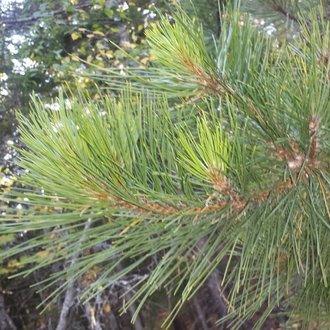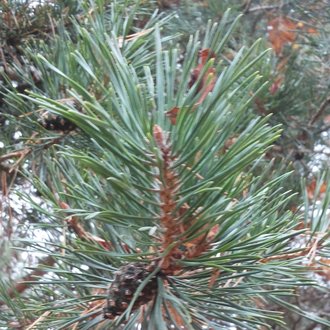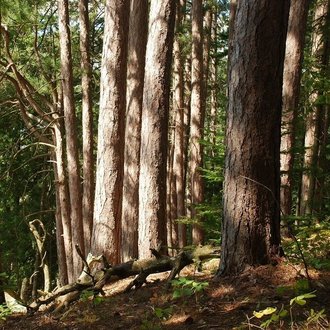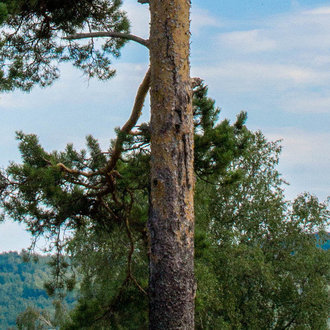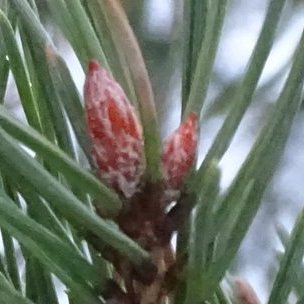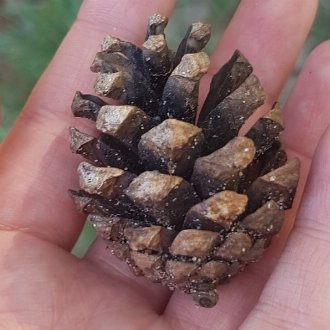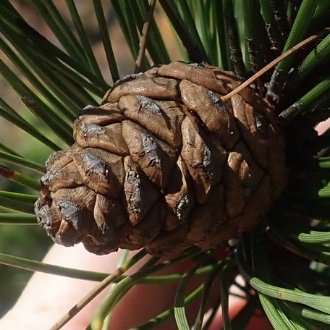Red Pine vs Scots Pine
These species are sometimes confused because they both have reddish bark, but they can be easily distinguished by their needle color and length, and also by differences in bark color. The cones are similar in size and both have scales that usually lack prickles, but the scales have a different shape at their tip. Their habitat preferences overlap, with both frequently found on sandy soils, but Scots pine is also found on boggy sites and in anthropogenic habitats where red pine is not usually found. Both species are planted in plantations, but only Scots pine is widely used in landscaping.
Red Pine (Pinus resinosa) | Scots Pine (Pinus sylvestris) |
A pine native to northern areas in eastern North America, mostly found on dry, sandy soils, often near lakes; typically requires fire to establish. | A pine with short, blue-green needles and orange-red upper bark, native to northern Europe and Siberia, introduced in North America where it has become invasive in some regions. |
Needles green to yellowish, much longer: about 4.5-6 inches (11-15cm) in length. Needles are rigid and break easily if snapped. Photo © Laura Gaudette, CC BY 4.0. | Needles bluish, much shorter: about 1-2.5 inches (3-6cm) in length. Photo © Jordi M-R, CC BY 4.0. |
Reddish color of bark subtle, but consistent: base of trunk is as red as the top. Hue is less orangeish. Photo © Doug Goldman, CC BY 4.0. | Bark becomes more reddish-orange towards the top of the tree. Hue is more orangeish than red pine. Color more intense than red pine at top. Bark of mature trees often gray at the bottom. Photo © ??????? ???????????, CC BY 4.0. |
Winter buds resinous. | Winter buds not resinous. Photo © Patrick Hanly, CC BY 4.0. |
Cone scales thinner and more rounded at the tip. Photo © Mark Eanes, CC BY 4.0. | Cone scales thicker and more angular at the tip. Photo © Mads Bray, CC BY 4.0. |
Scales on unopened cones usually have visibly rounded tips. Although scales may sometimes come to a peak, they are often pressed flatter against cone while cone is closed. Photo © Lynn Harper, Public Domain. | Scales on unopened cones look more diamond-shaped, and more consistently come to a sharper peak. Photo © Laura Gaudette, CC BY 4.0. |
References & External Resources
These short lists show only links helpful for ID. For a complete list of references and resources also covering other aspects of ecology, visit the links section of the full article on each plant, which is the first entry here.



